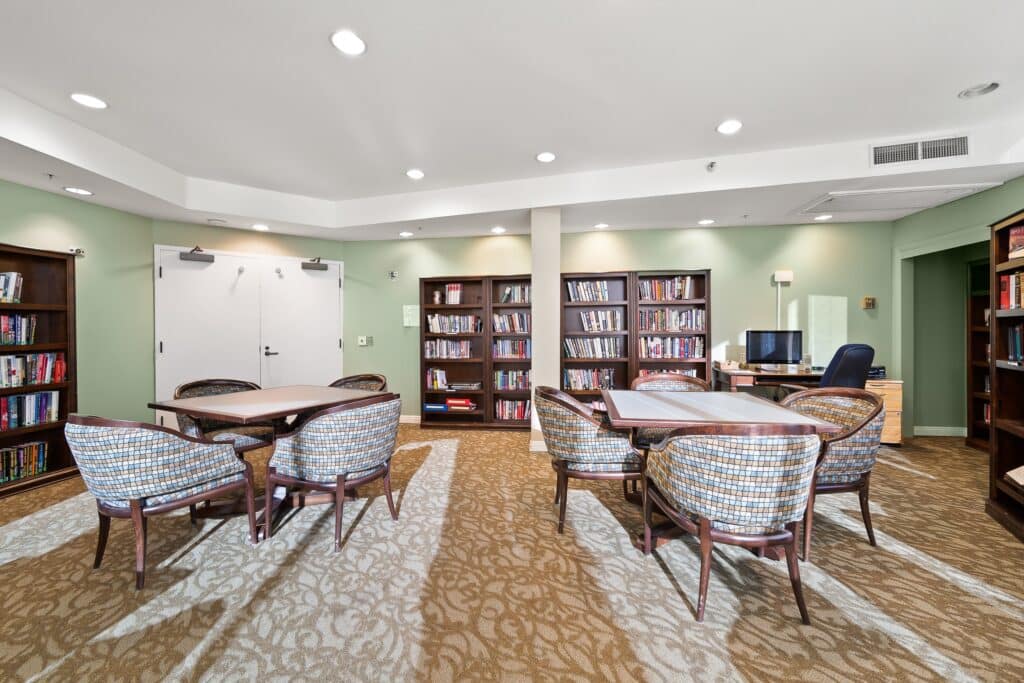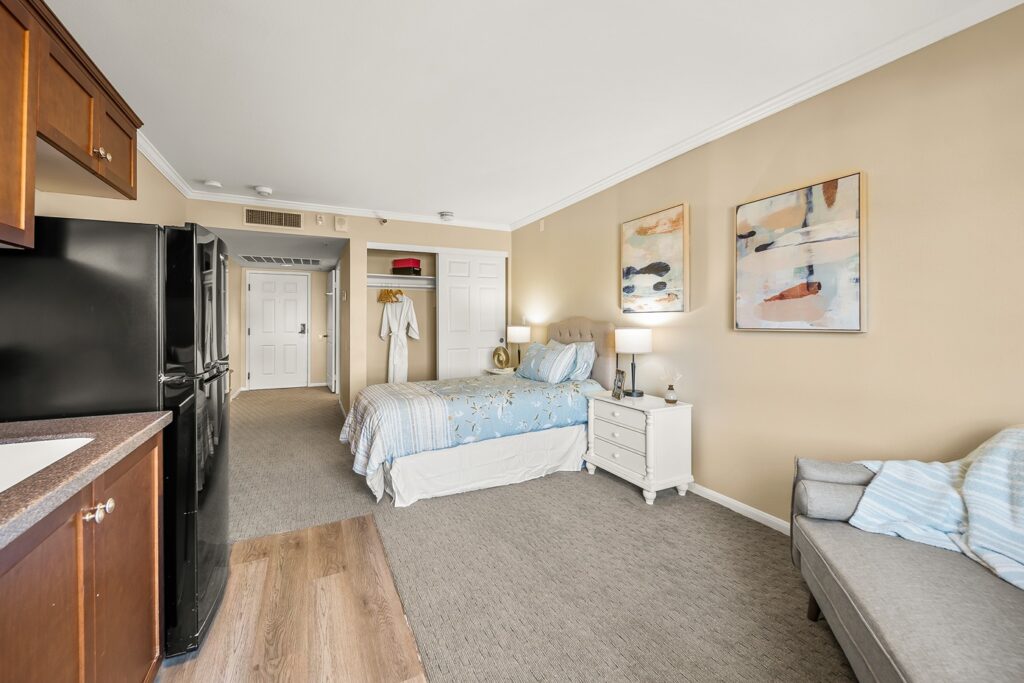What Is a Retirement Home: A Complete Guide for Seniors
If you’ve ever asked yourself, what is a retirement home, you’re likely exploring living options for seniors that blend independence with supportive care. A retirement home, also known as a home for old person is called a senior living community, provides a residential setting where older adults can thrive in a vibrant social atmosphere with personalized care services. Communities such as Westmont of Escondido exemplify this balance beautifully.
These homes offer maintenance-free living environments, allowing residents to engage fully in hobbies and social activities. Financial planning is simplified, enabling seniors to manage the retirement home cost effectively. Choosing the right retirement home enhances your quality of life, providing comfort, security, and community connection in your golden years.
Definition and Purpose of Retirement Homes
Retirement homes are designed for older adults seeking independence and tailored support. Unlike nursing homes, which provide intensive medical care, retirement homes offer a residential setting focused on lifestyle and wellness. Understanding the differences in retirement home vs nursing home helps clarify what best suits your needs.
Retirement homes prioritize your autonomy, supporting active living through various health and wellness programs. Facilities often reflect thoughtful retirement home architecture with accessible designs that blend comfort and safety. At Westmont of Escondido, the environment encourages an active and socially engaged lifestyle, ensuring residents thrive physically, mentally, and emotionally.
The dedicated team understands your unique needs, ensuring you receive the right level of assistance without compromising your independence. By choosing a retirement home, you’re embracing a lifestyle that balances support and autonomy, allowing you to focus on enjoying your golden years in comfort and companionship. This holistic approach to wellness integrates medical, social, and emotional support, ensuring you receive comprehensive care that enhances your overall well-being.
Personalized Care and Support Services
When you move into a retirement home, personalized care and support services are at the heart of enhancing your living experience. Your unique needs and individual preferences shape the care you receive, ensuring you feel valued and understood.
You’ll benefit from:
- Customized care plans are explicitly tailored to your health and lifestyle.
- One-on-one support from trained staff fosters meaningful connections.
- Specialized therapy programs, including physical and memory care, to promote well-being.
- Dietary accommodations that honor your preferences and restrictions make mealtimes enjoyable.
These personalized services provide essential support and encourage your independence and dignity. By focusing on your individual needs, retirement homes help create an environment where you can thrive, surrounded by compassion and understanding. Additionally, regular assessments ensure that your care adapts as your changing needs arise.
Social Opportunities and Community Engagement
Personalized care is just one part of the enriching experience in a retirement home. Here, you’ll discover a vibrant community with social opportunities that enhance your well-being. Engaging in social clubs and community events fosters connections and combats feelings of loneliness. These activities are crucial for seniors’ overall well-being and support mental and emotional health.
| Activity Type | Benefits | Examples |
| Social Clubs | Build friendships and support | Book clubs, gardening |
| Community Events | Create shared experiences | Holiday parties, picnics |
| Exercise Classes | Promote health and fun | Yoga, dance classes |
| Creative Arts | Encourage self-expression | Painting, crafting |
| Volunteer Programs | Give back to the community | Service projects |
These interactions provide a sense of belonging, purpose, and joy. You’ll find that each meaningful connection enriches your days, making your retirement experience truly fulfilling.
Maintenance-Free Living and Financial Considerations
Living in a retirement home means enjoying a carefree lifestyle, as it eliminates the stress of household chores and maintenance tasks. This maintenance-free living allows you to focus on what truly matters—your well-being and happiness. Here are some key benefits:
- Extra Time. You’ll have more time for socializing, hobbies, and relaxation.
- Safety First. With maintenance taken care of, you reduce risks associated with home upkeep.
- Financial Planning. Evaluating your retirement savings helps cover long-term care costs, ensuring peace of mind.
- Support Options. Explore long-term care insurance and government assistance for added financial security. Additionally, understanding assisted living costs is essential for effective budgeting and planning.
Understanding how to plan financially for retirement home living can significantly ease the transition. Resources like AARP’s retirement planning and information on senior housing costs provide valuable insights into budgeting and financial management.

Discovering the Right Retirement Home Near Escondido, CA
Westmont of Escondido offers exceptional options for those searching for a retirement home near Escondido, CA. This community conveniently blends premium living with easy access to local amenities, ensuring comfort, convenience, and community involvement. The thoughtful retirement home architecture provides a secure, accessible, and attractive environment for seniors.
When considering locations, proximity to family, healthcare facilities, and recreational areas an essential factor. Communities like Westmont integrate these elements, providing comprehensive benefits significantly enhance your living experience.
Embracing Community and Connection
Retirement homes provide more than just housing; they create vibrant communities where seniors can thrive. Active participation in community life promotes feelings of purpose, belonging, and emotional fulfillment. Your input is valued, contributing to the overall well-being of the community.
| Community Involvement | Benefits |
| Social Activities | Reduces isolation |
| Volunteer Opportunities | Sense of purpose |
| Resident Committees | Empowerment and feedback |
| Wellness Programs | Healthy lifestyle promotion |
Creating these connections transforms your experience, making each day more rewarding and enjoyable.
Begin Your New Chapter Today
Choosing a retirement home marks an exciting new chapter filled with opportunities for growth, friendship, and wellness. Retirement communities provide personalized care, vibrant social lives, and maintenance-free living, all structured to enhance independence and comfort.
Whether you’re comparing retirement home vs nursing home options, evaluating retirement home cost, or simply exploring retirement home architecture, understanding your needs is crucial. Communities like Westmont of Escondido offer tours that give insights into daily life and services.
To explore all the benefits Westmont of Escondido offers, call 760-737-5110 or schedule a tour today. Your new, fulfilling retirement awaits!
Discover the level of care you or your family member requires. What Level of Care Do You Need?
Frequently Asked Questions
How do retirement homes work?
Retirement homes are residential communities designed for older adults who are generally independent but may benefit from some daily support. Residents live in private or semi-private units and can access services like meals, housekeeping, transportation, and social activities. These communities often provide a safe, maintenance-free environment with optional support as needs change. While not medical facilities, many retirement homes offer wellness programs and connections to health services.
What age is best for a retirement home?
There isn’t a strict age requirement, but most people consider moving into a retirement home between the ages of 70 and 80. The best time depends on individual health, lifestyle preferences, and the desire for a more supportive or social living environment. Some adults move earlier to enjoy the amenities and community life while still active and independent. Others wait until they need more assistance with daily tasks or no longer want the responsibilities of homeownership.
What is the difference between a retirement home and a nursing home?
A retirement home caters mostly to independent seniors who want a supportive, community-style living arrangement with optional services. A nursing home, on the other hand, provides round-the-clock medical care and support for individuals with severe health conditions or disabilities. While retirement homes focus on lifestyle and convenience, nursing homes are medical facilities focused on care. A nursing home’s level of assistance and supervision is typically much higher than in a retirement home.
What are the three criteria that make up the definition of a retirement home?
Retirement homes are defined by three main criteria: age eligibility, level of independence, and availability of support services. First, residents are typically seniors, often 55 or older. Second, they maintain a degree of freedom in daily living. Third, retirement homes offer support services like meals, housekeeping, and social activities to enhance quality of life without providing intensive medical care.










